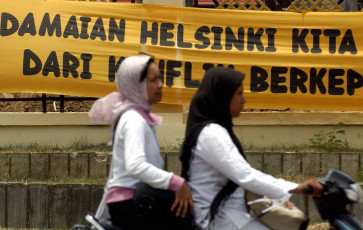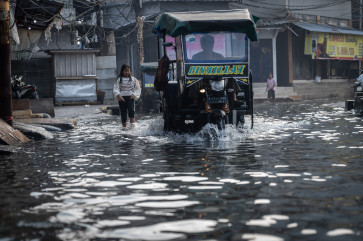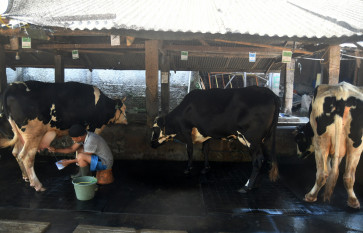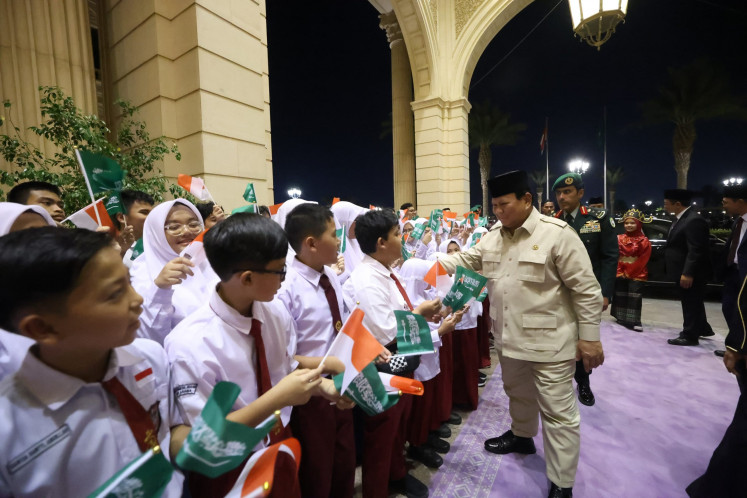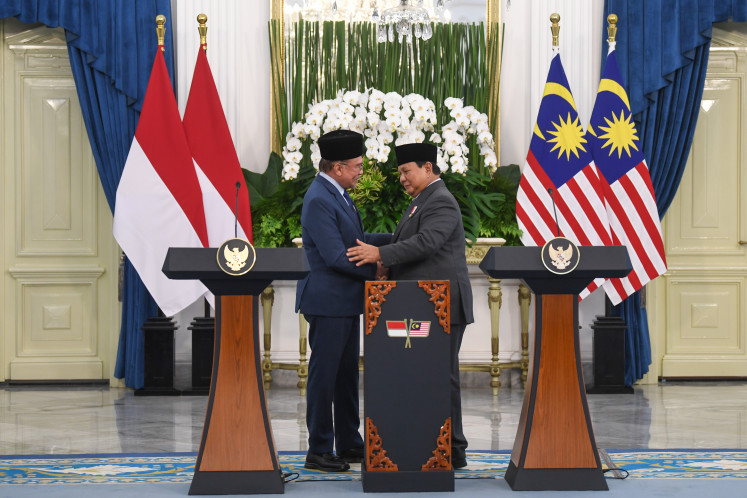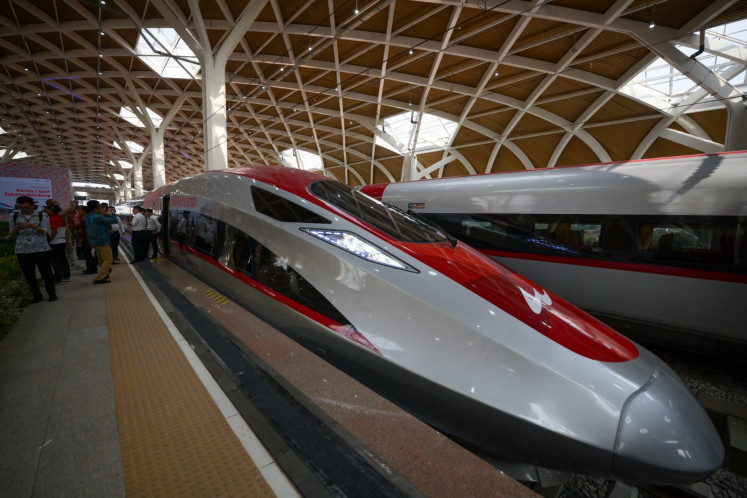Popular Reads
Top Results
Can't find what you're looking for?
View all search resultsPopular Reads
Top Results
Can't find what you're looking for?
View all search resultsBukit Duri combines last Pasar Rakyat, protests
Hundreds of residents of Bukit Duri in South Jakarta celebrated Pasar Rakyat (The People’s Market), over the weekend, perhaps for the last time, as the city administration plans to evict them in May
Change text size
Gift Premium Articles
to Anyone

H
undreds of residents of Bukit Duri in South Jakarta celebrated Pasar Rakyat (The People’s Market), over the weekend, perhaps for the last time, as the city administration plans to evict them in May.
Organized by NGO Sanggar Ciliwung Merdeka, which advocates for the riverbank dwellers, the festival featured discussion around urban kampung (village community) and their beloved though polluted river, music and dance performances and art workshops for children and teenagers.
“Usually we organize the event in August once every two years to celebrate Independence Day. However, this year we organized it earlier after the city administration warned us several times that we would be moved to rusunawa (low-cost apartments),” Sanik Taslim, chairwoman of the event committee, said on Saturday.
Local resident Gihon Sihaya said on Saturday that the event may stimulate residents’s creativity and prepare them to own small businesses before their move to Rawa Bebek rusunawa. “Since 2000, Pasar Rakyat has been held to allow residents to express their creativity and to sell their home-industry products such as food, toys and souvenirs,” Gihon said.
However, this year the celebration was also arranged as an outlet for protests against the planned eviction.
The residents demanded fair policy from Jakarta Governor Basuki “Ahok” Tjahaja Purnama and demanded that former governor Joko “Jokowi” Widodo, the President, fulfill his promise to give compensation to evictees. Jokowi visited the area during his gubernatorial campaign in 2012.
Children sang several songs at the event, with lyrics containing protests against the city administration’s plan to evict them and put them in rusunawa, also in East Jakarta but far from their current homes.
Artists also helped to make the market festive, using paintings to satirize the city administration’s policy of embanking the river with concrete sheet piles. One painter also depicted Jokowi in his time as Jakarta governor, demanding that Jokowi fulfill his promise to build a “kampung susun” (elevated village) instead of relocating residents to rusunawa.
Kampung susun is a design initiated by Ciliwung Merdeka and local residents and supported by community architects and scholars that accommodates the residents’ various informal employment arrangements.
On Saturday afternoon, the NGO organized a discussion between Sandyawan Sumardi, the leader of Ciliwung Merdeka, JJ Rizal, a prominent historian, and Sudirman Asun, an activist from the Ciliwung Institute.
Rizal said that Jakarta’s ecology may regress in the future due to the city administration’s use of sheet piling to embank the river. “Trees should absorb water from rivers. Yet sheet piles have replaced trees on our riverbanks.” Rizal said.
Meanwhile, Asun said that since sheet piles had embanked the rivers, some residents struggled to access water. “Sheet piles prevent water being absorbed into the soil,” he said.
Sandyawan demanded that Jokowi fix the riverbank problems in Jakarta through the Public Works and Public Housing Ministry. “When [Jokowi] was Jakarta governor, he said that the riverbank problems were the obligation of the ministry,” Sandyawan said.
Rita Padawangi, an urban studies scholar from the National University of Singapore who attended the event said that concrete embankments were no longer used in other countries. Singapore, she cited, used concrete embankment in the 1970s. “However, the government replaced the sheet piles with trees recently to improve the river ecosystem,” Rita said.

